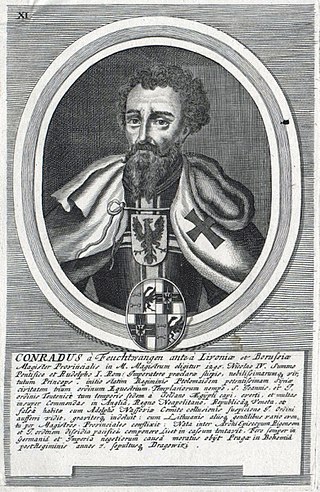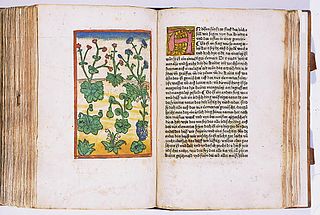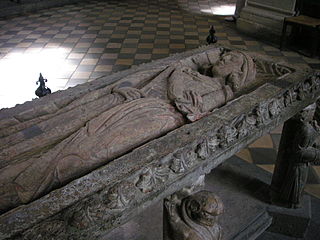
The Codex Manesse is a Liederhandschrift, the single most comprehensive source of Middle High German Minnesang poetry, written and illustrated between c. 1304 when the main part was completed, and c. 1340 with the addenda.

Conrad Celtes was a German Renaissance humanist scholar and poet of the German Renaissance born in Franconia. He led the theatrical performances at the Viennese court and reformed the syllabi.

Conrad Gessner was a Swiss physician, naturalist, bibliographer, and philologist. Born into a poor family in Zürich, Switzerland, his father and teachers quickly realised his talents and supported him through university, where he studied classical languages, theology and medicine. He became Zürich's city physician, but was able to spend much of his time on collecting, research and writing. Gessner compiled monumental works on bibliography and zoology and was working on a major botanical text at the time of his death from plague at the age of 49. He is regarded as the father of modern scientific bibliography, zoology and botany. He was frequently the first to describe species of plants or animals in Europe, such as the tulip in 1559. A number of plants and animals have been named after him.
Conrad II, was Duke of Rothenburg (1188–1191) and Swabia from 1191 until his death. He was the fifth son of Frederick I Barbarossa and Beatrice I, Countess of Burgundy.

The Z4 was arguably the world's first commercial digital computer, and is the oldest surviving programmable computer. It was designed, and manufactured by early computer scientist Konrad Zuse's company Zuse Apparatebau, for an order placed by Henschel & Son, in 1942; though only partially assembled in Berlin, then completed in Göttingen in the Third Reich in April 1945, but not delivered before the defeat of Nazi Germany, in 1945. The Z4 was Zuse's final target for the Z3 design. Like the earlier Z2, it comprised a combination of mechanical memory and electromechanical logic.
Hans Konrad von Orelli was a Swiss theologian.

Konrad Pellikan was a German Protestant theologian, humanist, Protestant reformer and Christian Hebraist who worked chiefly in Switzerland.

Konrad von Feuchtwangen was the 13th Grand Master of the Teutonic Knights from 1290 to 1296.

Conrad of Megenberg was a German Catholic scholar, and a writer.
Conrad II of Teck was Duke of Teck.

The Archdiocese of Salzburg is a Latin Church archdiocese of the Catholic Church in Austria. The archdiocese is one of two Austrian archdioceses, serving alongside the Archdiocese of Vienna.

Historia animalium, published in Zurich in 1551–1558 and 1587, is an encyclopedic "inventory of renaissance zoology" by Conrad Gessner (1516–1565). Gessner was a medical doctor and professor at the Carolinum in Zürich, the precursor of the University of Zurich. The Historia animalium, after Aristotle's work of the same name, is the first modern zoological work that attempts to describe all the animals known, and the first bibliography of natural history writings. The five volumes of natural history of animals cover more than 4500 pages. The animals are presented in alphabetical order, marking the change from Middle Ages encyclopedias, or "mirrors" to a modern view of a consultation work.

The County of Kyburg probably came into existence in the 11th century and is first mentioned in 1027. After 1053 it was a possession of the counts of Dillingen. It was greatly expanded with the extinction of the House of Lenzburg in 1173.
Conrad of Vechta was Bishop of Verden (1400–1402/1407), Bishop of Olomouc (1408–1413), Archbishop of Prague (1413–1421), and Master of the Mint (1401–1403) and Chancellor (1405–1412) of the Kingdom of Bohemia.

The Lochamer-Liederbuch is an extensive collection of German songs at the transition from the late Middle Ages to the Renaissance. It dates from the mid-15th century and is regarded as one of the most important surviving collections of music from fifteenth-century Germany. Other names are Locheimer and Lochheimer Liederbuch.

Matilda of Swabia, a member of the Conradine dynasty, was Duchess of Carinthia by her first marriage with Duke Conrad I and Duchess of Upper Lorraine by her second marriage to Duke Frederick II. She played an active role in promoting her son, Duke Conrad the Younger, as a candidate for the German throne in 1024 and to this end corresponded with King Mieszko II Lambert of Poland.

The Swiss Social Archives in Zurich is a historical archive, an academic library, a collection of documentation and a research facility specialising in social issues and social movements. The Swiss Confederation recognizes the archives as the country's leading research facility for social issues and social movements. The Social Archives run their own research endowment fund, the Ellen Rifkin Hill Foundation. The SSA play an important role in communicating scholarship to the broader community. They have convened several exhibitions, published essay collections on Swiss social history and conduct lecture series, presentations and information sessions. The archives work with Swiss secondary and tertiary educational institutions, archives and libraries and with similar institutions abroad. The SSA are a founding member of the International Association of Labour History Institutions (IALHI).
Conrad of Eberbach was a Cistercian monk, and later abbot, of Eberbach Abbey, Germany, and historian of the early Cistercian Order.

Conrad Grünenberg, also spelled Konrad, Grünemberg, Grünberg was a patrician from Constance in southern Germany, known as the author of three books, two armorials and a travelogue: the Österreichische Wappenchronik ; the Wappenbuch, containing some 2000 coats-of-arms, which he presented as a gift to Emperor Frederick III; and the illustrated description of his 1486 pilgrimage to Jerusalem.

Conrad, called Conrad Kurzbold in order to distinguish him from other members of the Conradine dynasty, was Count of Lower Lahngau and a retainer of East Francian kings Louis the Child, Henry the Fowler, and Holy Roman Emperor Otto the Great. He was a cousin of King Conrad the Younger and founded the Stift of St George in Limburg, around which the city of Limburg an der Lahn developed.













